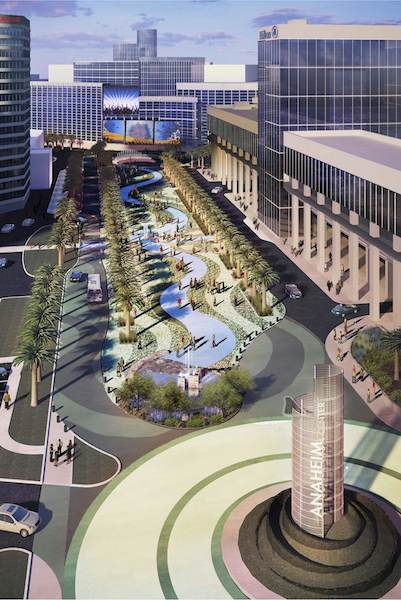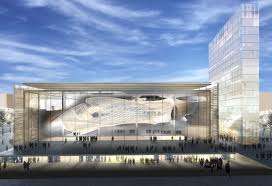Those seeking meeting and convention spaces are becoming more discriminating, demanding more bang for the buck.
This trend has created demands for facilities with greater versatility with more to offer than just space.
 Different space configurations are being offered to pinpoint exact needs while focusing on efficiency and functionality to lower operating costs in a competitive marketplace. Eco-friendly environments reduce operating costs with the use of renewable energy and other adaptations designed to conserve resources. Cost reduction is especially needed in the North American market where the supply of meeting and exhibit spaces exceeds demand.
Different space configurations are being offered to pinpoint exact needs while focusing on efficiency and functionality to lower operating costs in a competitive marketplace. Eco-friendly environments reduce operating costs with the use of renewable energy and other adaptations designed to conserve resources. Cost reduction is especially needed in the North American market where the supply of meeting and exhibit spaces exceeds demand.
There is also the added reality that the international business climate is now looking globally for meeting and tradeshow locales, widening the competitive nature of the industry. It is therefore necessary to also develop alternative revenue streams with large-scale multi-purpose facilities that can house major concerts, sporting events and other entertainment media.
Both the North American and overseas convention markets must offer more than brick and mortar venues to maintain the position as a major competitor in the world’s meeting and business hubs. Amenities must now include exterior and interior spaces, creating environments that are not only functional, but memorable and inviting. This includes staffing that has been in-serviced in providing the level of hospitality expected from a four or five-star hotel. No longer can the convention center position itself in isolation with a few surrounding hotels, but must also become part of the larger community with a wide array of services including dining, shopping, tourist attractions and nearby hotel accommodations, reaching out to the broad spectrum of the business traveling public markets. Transportation services must also be accessible to and from major airports as well as varied points of interest.
Now, more than ever, hotels not only have the ability to offer their guests such world-class resort amenities, such as fitness, pool and dining facilities, but are also heavily chiming in on the convention business. These state-of-the-art meeting and event facilities come with versatile square footage and all the conveniences of a one-stop shop.
So, what has been done to keep up with the tides of change in the convention industry?
In North America, convention spaces are updating their already existing facilities, accommodating industry demands in an ever-increasing competitive marketplace. Functionality is paramount with spaces of differing sizes and configurations, allowing for optimum utilization. Everything from small conference rooms and breakout areas to mid-sized lecture halls and large arenas are considered vital in targeting specific needs. This includes having the latest in conferencing, Wi-Fi Internet and audio-visual technologies.
Existing facilities are also retrofitting with “green” adaptations, investing in solar energy and other initiatives in natural resource management. New facilities have also followed this trend, leading the way in efficiency and cost reduction.
Southern California’s Anaheim Convention Center is a trendsetter with the 2013 premier of the Grand Plaza, a 100,000-square-foot outdoor space featuring areas for dining, relaxation and/or physical activity. This space, interspersed with seating areas, is beautified with lush landscaping and impressive water features with evening illumination. The adjacent Anaheim Hilton also shares this beautiful outdoor space, successfully integrating both facilities into one complete convention and hotel complex.
Another advancing trend is in the level of hospitality being offered by convention facilities around the world. Human resource departments are making certain staff is able to provide services akin to a luxury resort. Top chefs are now being recruited, creating a world-class culinary experience, whether it be in an on-site restaurant or in one of the convention spaces. Catering and concierge departments have become more specialized, targeting the needs of specific clients.
New convention facilities, especially overseas with a more sophisticated international marketplace, are also discovering that innovation in functionality does not need to sacrifice unique and eye-pleasing architectural design. Renowned architect Massimiliano Fuksas substantiated this reality with what is known as the “Cloud” in Rome Italy’s New Convention Center. This is a one-of-a-kind structure within a structure, made from a composite mixture of silicon, fiberglass and steel. It is designed to appear as if it is floating in a sea of glass and steel, rising 131 feet. When the “Cloud” is unveiled in 2014, it will provide three separate 1,300-seat auditoriums on three different levels. This unique multi-level configuration maximizes use of space, accommodating the high demands of the industry’s international marketplace.
This new complex is centered in the Eur, Rome’s hub for business, shopping, entertainment and hotel accommodations. Sought-after tourist destinations are also in close proximity with major Metro Subway routes, providing easy access to and from the International Airport.
Convention centers are now seeing themselves as part of the larger surrounding area, partnering with other hotels and similar facilities. Existing convention centers are now annexing themselves with hotels by utilizing pedestrian bridges. Some of the larger trade shows, such as the Consumer Electronics Show in Las Vegas, disperse its exhibit space to include several of the city’s largest facilities, providing convenient transportation services as a link between venues. This partnering relationship is becoming a worldwide trend as industry needs diversify.





























